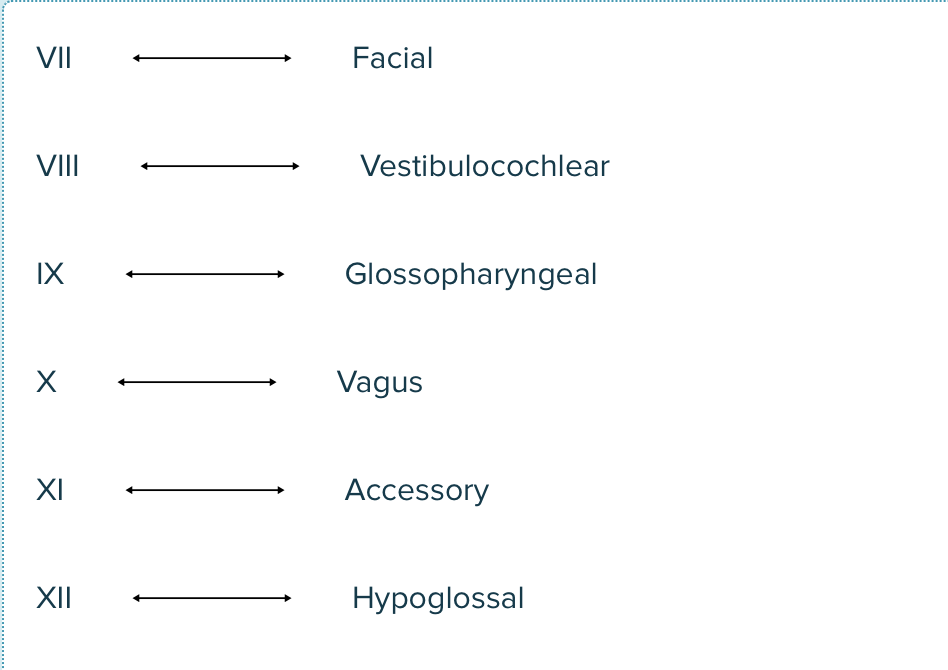List and explain the functions of cranial nerves VII to XII.

Understand the Problem
The question is asking for information related to cranial nerves, specifically concerning their names and some associated characteristics indicated by arrows, which may represent the type of functions they perform.
Answer
VII: Facial expression; VIII: Hearing, balance; IX: Taste, swallow; X: Heart, digestion; XI: Neck, shoulders; XII: Tongue movement.
Cranial nerve VII, the Facial nerve, controls facial expression and some taste sensations. VIII, the Vestibulocochlear nerve, is responsible for hearing and balance. IX, the Glossopharyngeal nerve, manages taste and swallowing. X, the Vagus nerve, controls heart rate and digestion. XI, the Accessory nerve, influences shoulder and neck muscles. XII, the Hypoglossal nerve, controls tongue movements.
Answer for screen readers
Cranial nerve VII, the Facial nerve, controls facial expression and some taste sensations. VIII, the Vestibulocochlear nerve, is responsible for hearing and balance. IX, the Glossopharyngeal nerve, manages taste and swallowing. X, the Vagus nerve, controls heart rate and digestion. XI, the Accessory nerve, influences shoulder and neck muscles. XII, the Hypoglossal nerve, controls tongue movements.
More Information
Cranial nerves are essential for numerous sensory and motor functions, each serving specialized roles critical for maintaining various body functions.
Tips
A common mistake is confusing the sensory and motor functions of these nerves. Knowing their specific roles helps in understanding and memorization.
Sources
- Cranial Nerves: Function, Anatomy & Location - Cleveland Clinic - my.clevelandclinic.org
- What are the 12 cranial nerves? - MedicalNewsToday - medicalnewstoday.com
- Cranial nerves: Anatomy, names, functions and mnemonics | Kenhub - kenhub.com
AI-generated content may contain errors. Please verify critical information